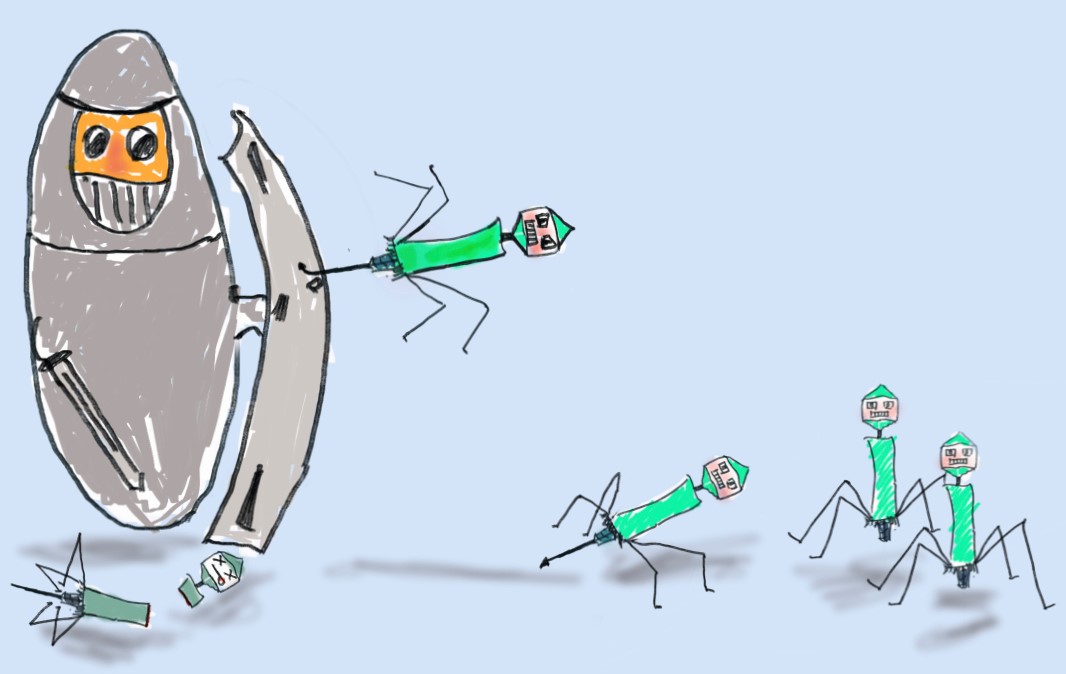How do bacteria fight viruses?

We humans have developed effective defence strategies against pathogens that prevent and fight infections. Our immune response is incredibly complex and involves entire organs and different cell types. Bacteria are not nearly as complex, but they also have an effective immune system.
Just like humans, bacteria suffer from infections caused by viruses (bacteriophages). They have developed a variety of effective defence mechanisms against this. Ideally, these defences prevent a virus from entering the microbe in the first place. For example, docking stations for viruses can be modified in such a way that they no longer function as such. Another possibility is to widen the space between the cell envelope and the cell interior. This means that the injection needle used by viruses to channel their genetic information into the cell can no longer bridge this gap. Some bacteria, such as Escherichia coli, can wrap themselves in a kind of armour or weave nets around themselves, in which the phages then become entangled.
If a virus breaks through this first line of defence and is able to inject its genetic material into the bacterium, microbes still have the ability to distinguish foreign DNA from their own and chop it up into small pieces using gene scissors (restriction enzyme). If the resulting fragments are incorporated into the genetic material of the bacterium, it can remember the virus in the event of a new infection and fight it even more effectively.
The CRISPR/Cas system, which has become famous in recent years, is used for this purpose. Here, too, gene scissors are used. This time, the target is not a fixed DNA base sequence, as with classic restriction enzymes, but a piece of the virus's genetic material. CRISPR/Cas can therefore be flexibly genetically controlled. This property also allows it to be used as a molecular tool for manipulating genes of any kind, even those of humans. CRISPR/Cas has thus developed into a new key technology for combating diseases. It is the second great moment for the bacterial immune system, after the restriction enzymes heralded the age of modern molecular biology half a century ago.
The discovery of CRISPR/Cas also reveals a surprising parallel between the human and microbial immune systems: both rest on two pillars, innate (general) immunity and adapted (adaptive) immunity, and there are additional mechanisms in the microcosm: For example, bacteria can specifically initiate their cell death if the fight against the viral infection appears hopeless. At first glance, such a suicide may seem strange. However, bacteria are never really alone, but live in association with others, which means that this is the only way to prevent the rapid spread of the phage within a population. This strategy is similar to the quarantine measures we humans use to prevent and contain epidemics.
Anyone who believes that we have now uncovered all the secrets of the bacterial immune system is very much mistaken. As recently as 2018, a team led by Israeli researcher Rotem Sorek discovered ten completely unknown immune systems whose mechanisms now need to be decoded.
© Text: Jürgen Lassak / VAAM, juergen.lassak[at]lmu.de, Use according to CC 4.0
© Figure: Christine Neupert / Use according to CC 4.0

